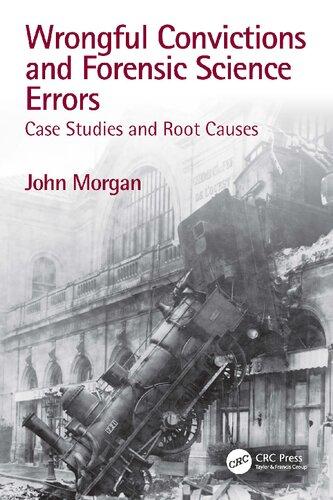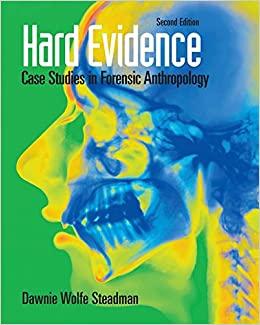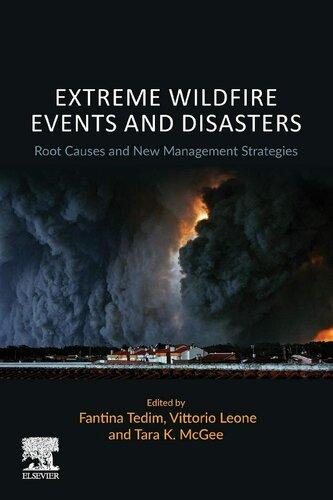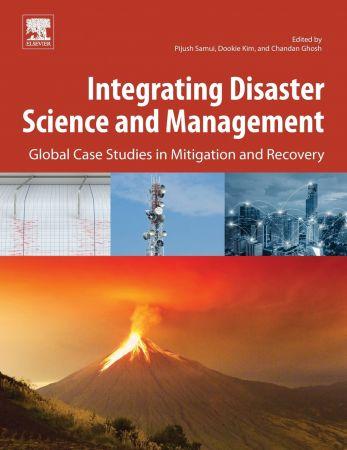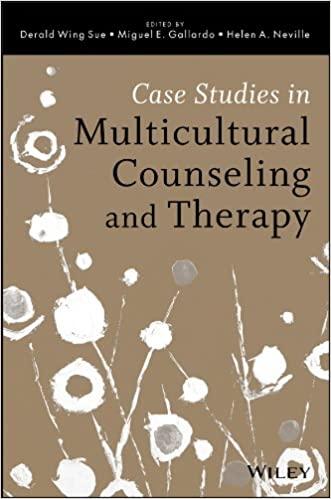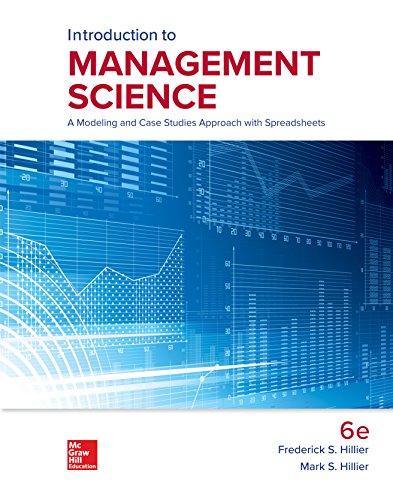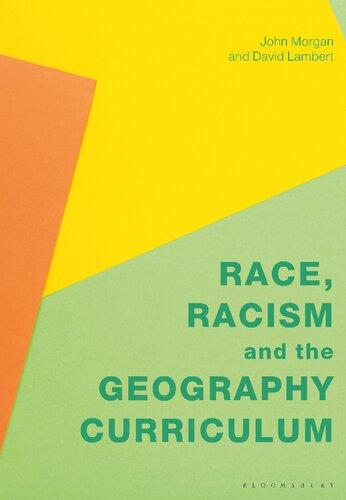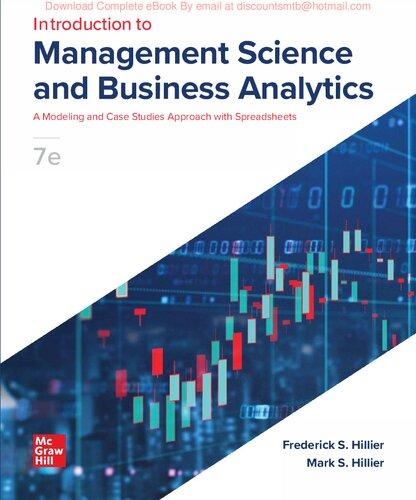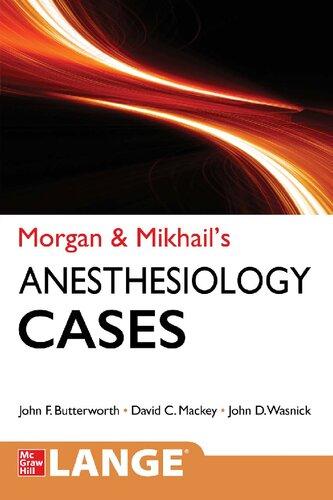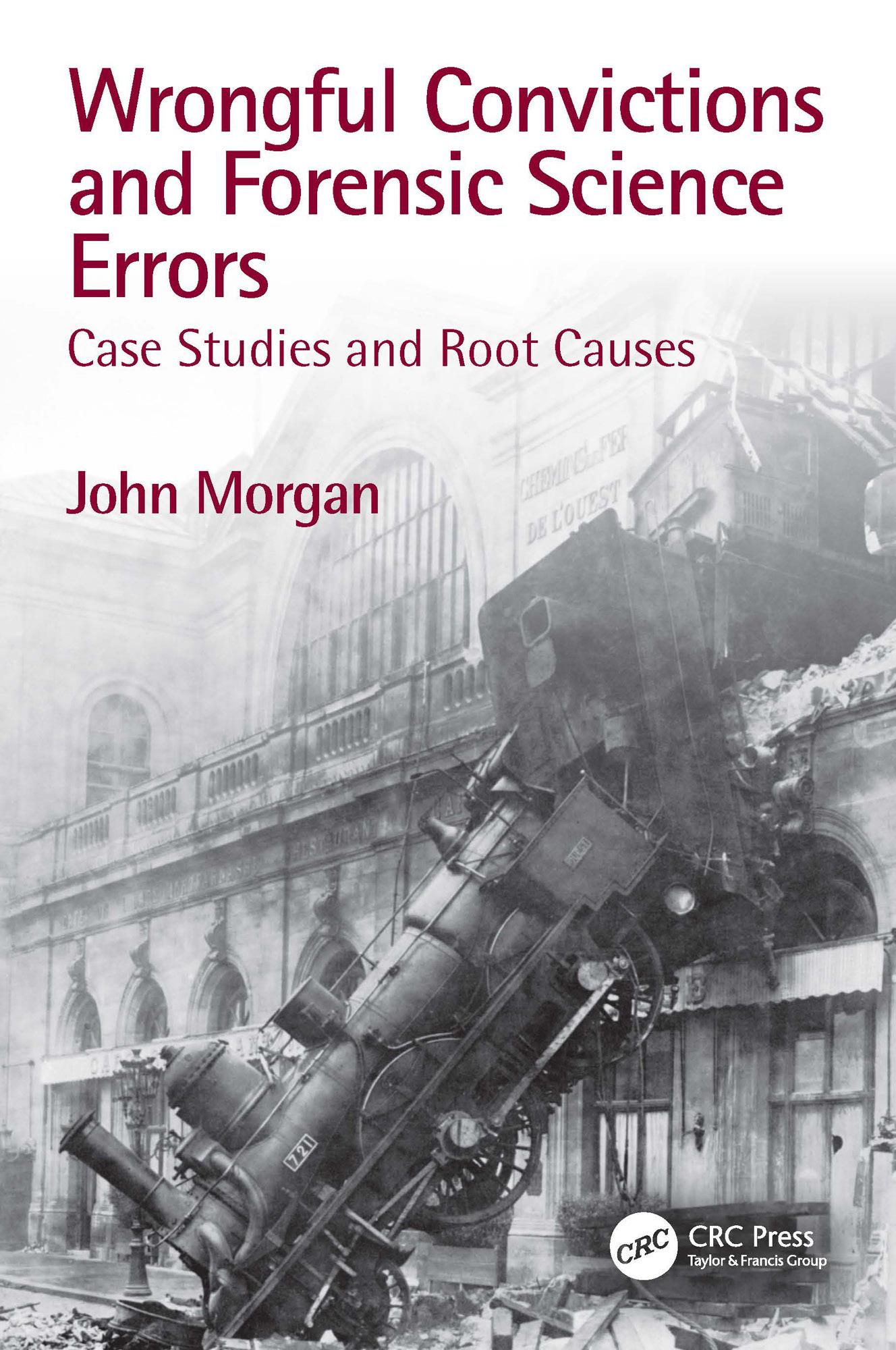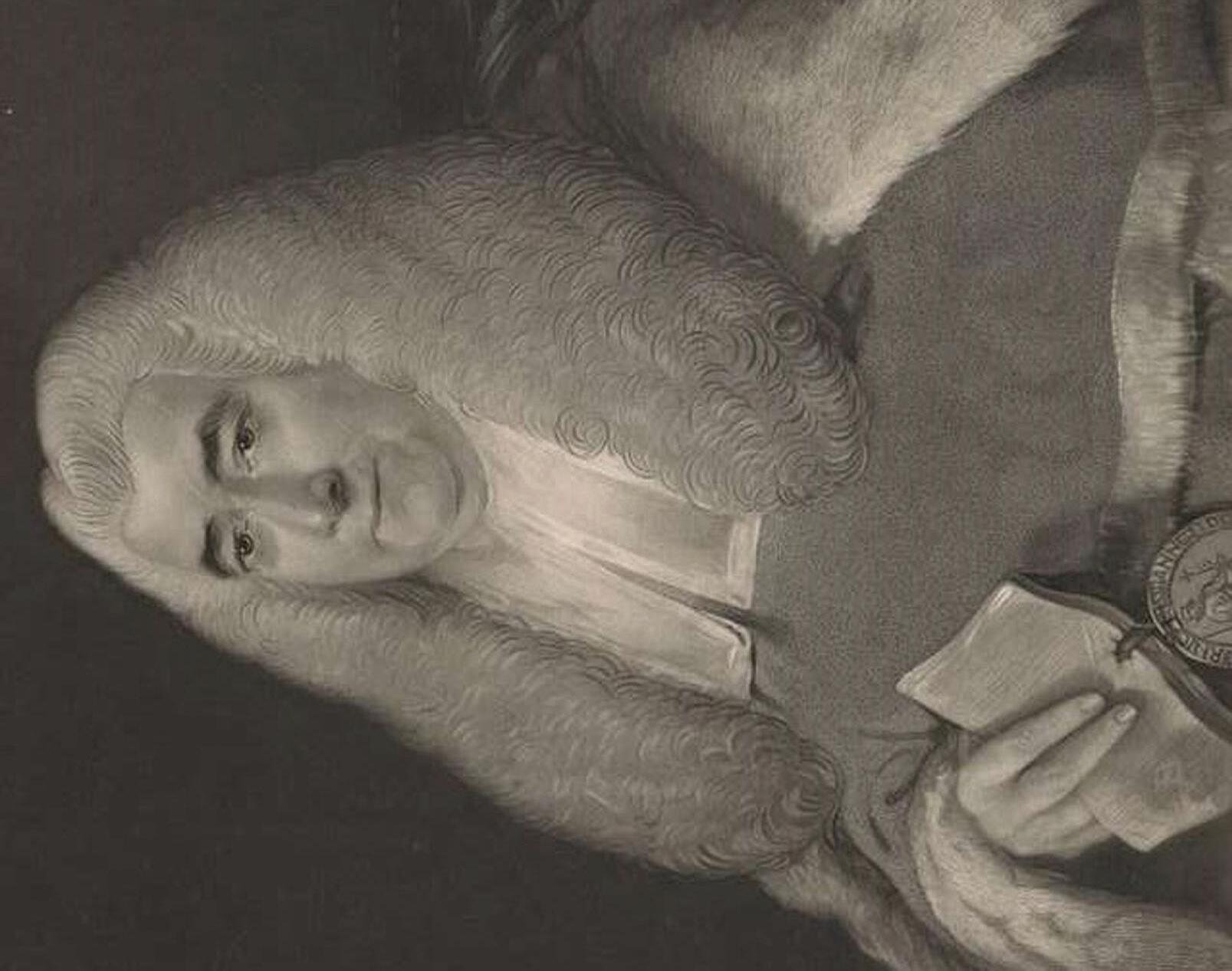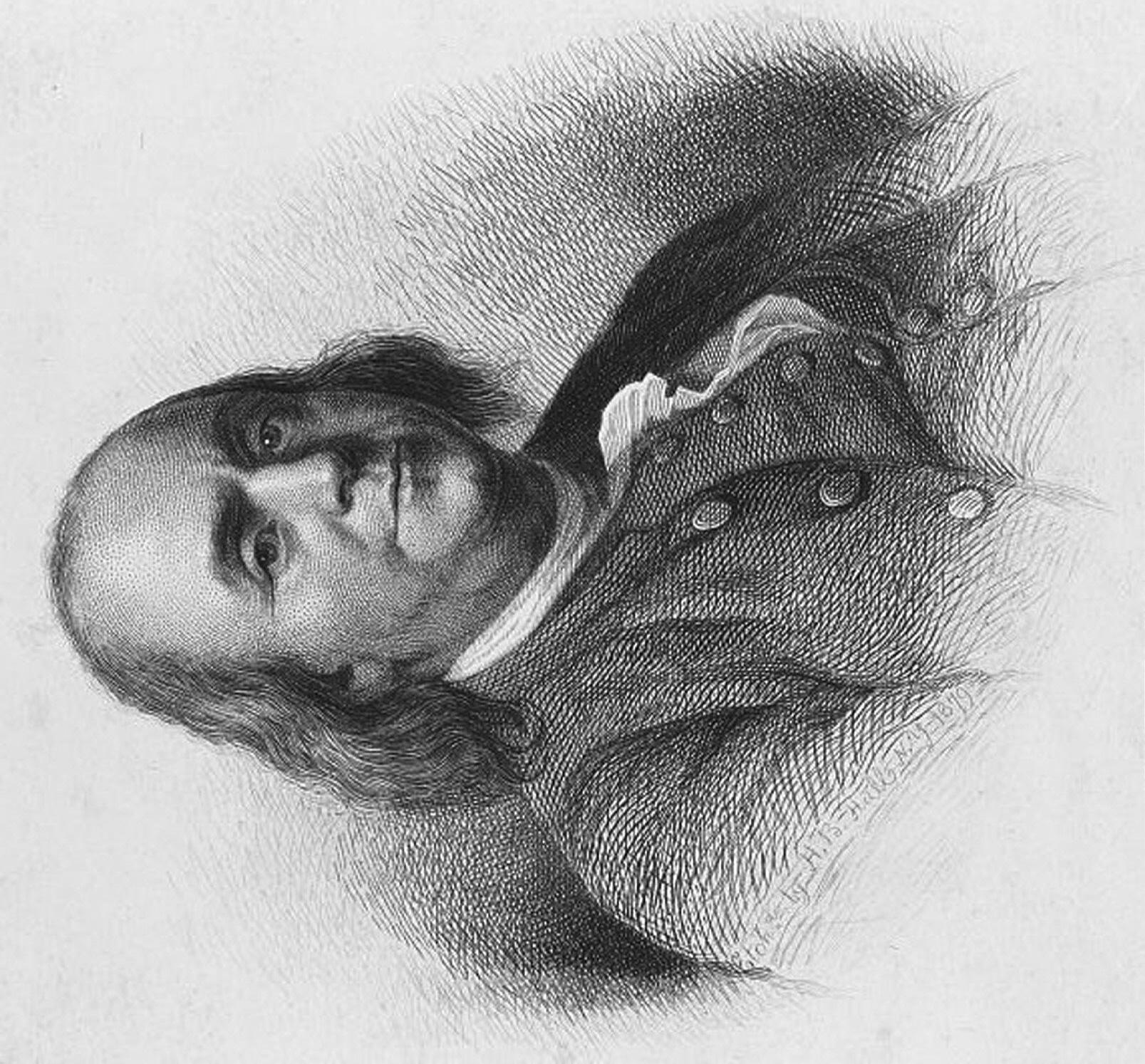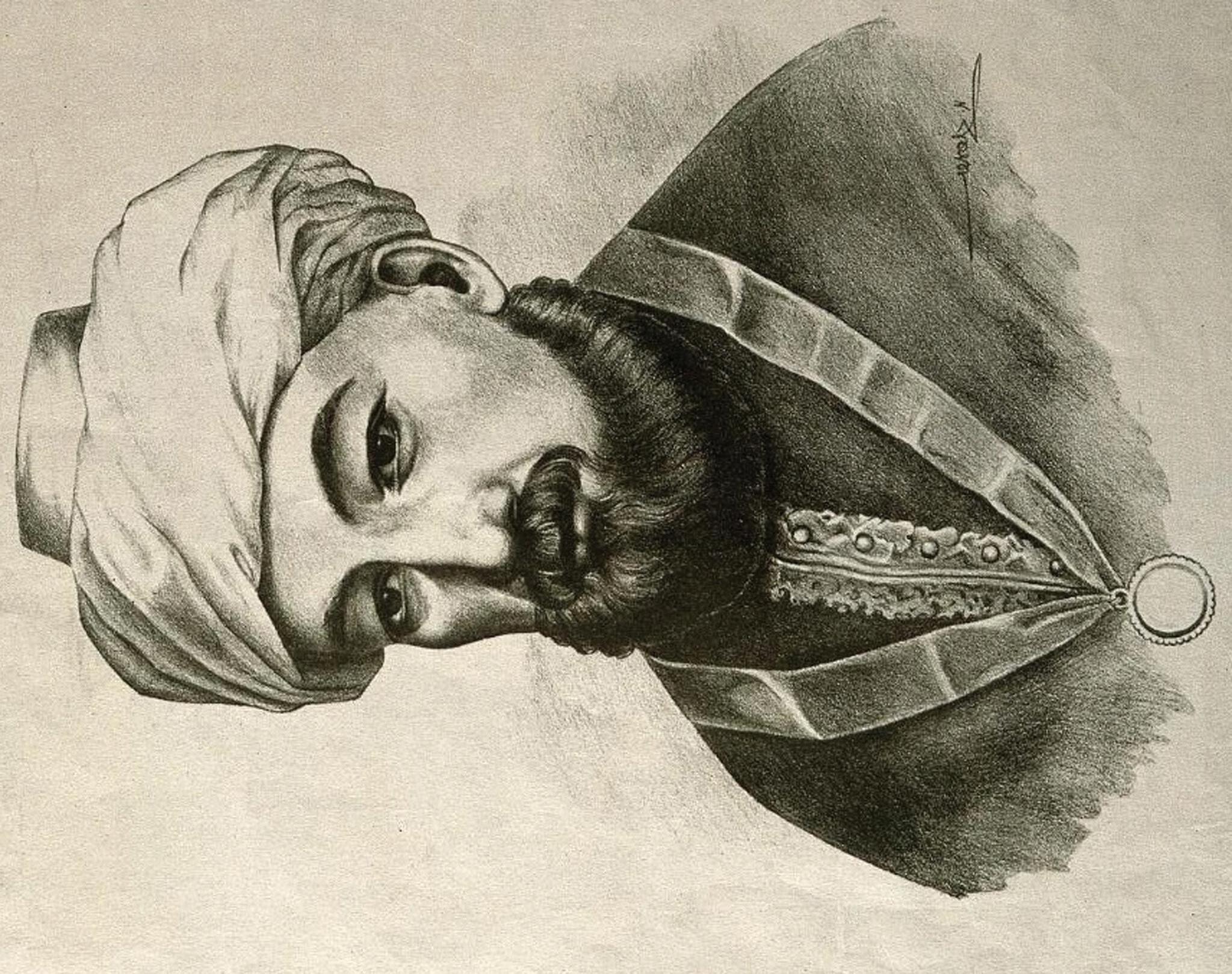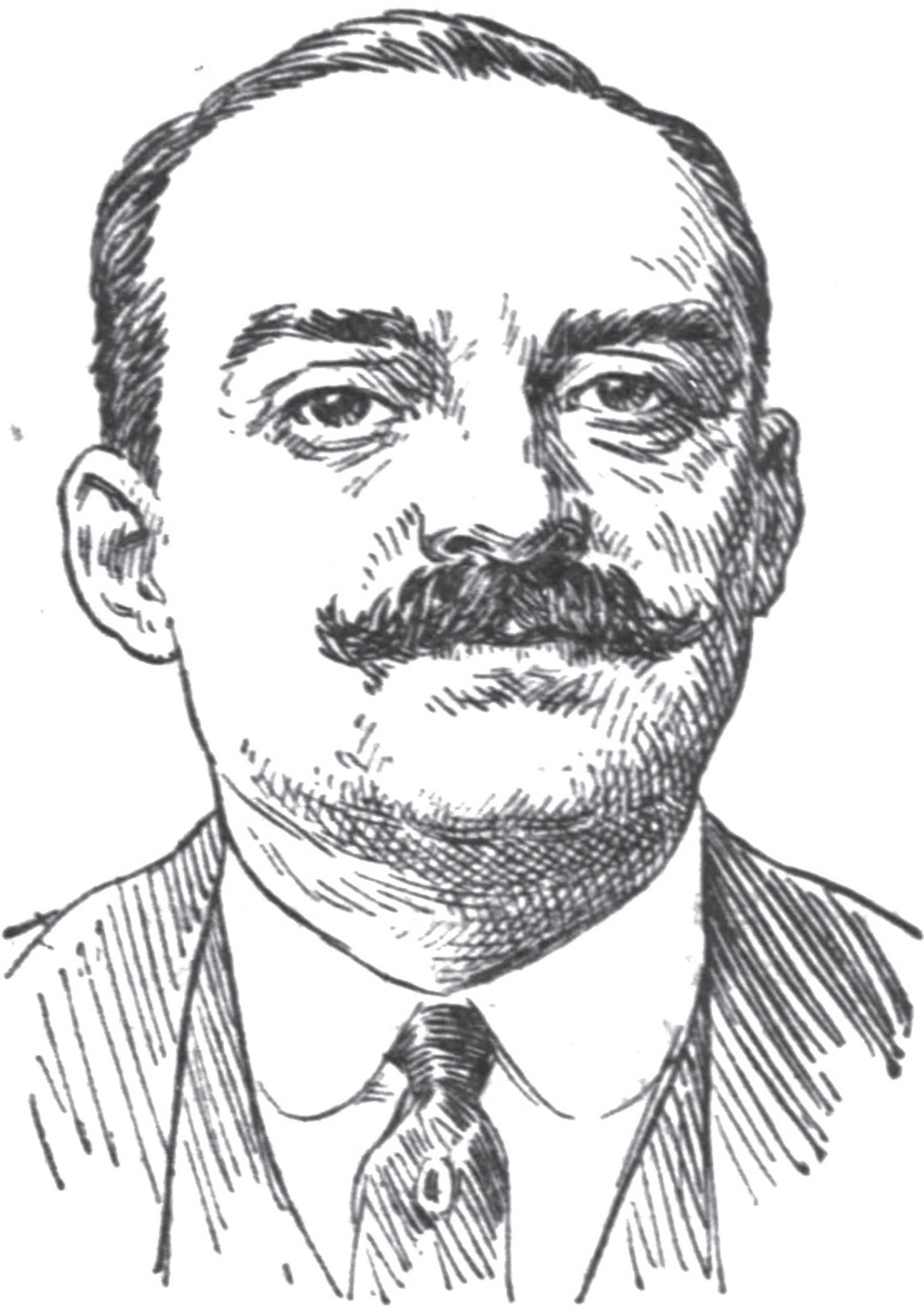Wrongful Convictions and Forensic Science Errors
Case Studies and Root Causes
by John Morgan
Designed cover image: The 1895 train derailment at Montparnasse train station, Paris, France. A famous case of both mechanical failure and human error.
First edition published 2023 by CRC Press
4 Park Square, Milton Park, Abingdon, Oxon, OX14 4RN
and by CRC Press
6000 Broken Sound Parkway NW, Suite 300, Boca Raton, FL 33487-2742
© 2023 John Morgan
CRC Press is an imprint of Informa UK Limited
The right of John Morgan to be identified as author of this work has been asserted in accordance with sections 77 and 78 of the Copyright, Designs and Patents Act 1988.
All rights reserved. No part of this book may be reprinted or reproduced or utilised in any form or by any electronic, mechanical, or other means, now known or hereafter invented, including photocopying and recording, or in any information storage or retrieval system, without permission in writing from the publishers.
For permission to photocopy or use material electronically from this work, access www.copyright .com or contact the Copyright Clearance Center, Inc. (CCC), 222 Rosewood Drive, Danvers, MA 01923, 978-750-8400. For works that are not available on CCC please contact mpkbookspermissions @tandf.co.uk
Trademark notice : Product or corporate names may be trademarks or registered trademarks, and are used only for identification and explanation without intent to infringe.
British Library Cataloguing-in-Publication Data
A catalogue record for this book is available from the British Library
ISBN: 978-1-032-06497-0 (hbk)
ISBN: 978-1-032-06350-8 (pbk)
ISBN: 978-1-003-20257-8 (ebk)
DOI: 10.4324/9781003202578
Typeset in Sabon by Deanta Global Publishing Services, Chennai, India
This book is dedicated to my parents, Jim and Sue Morgan, whose love and teaching remain.
Cause: Lower-Level Deficiencies May Lead to Serious Errors if Left Unresolved 317
Cause: Forensic Science Organizations May Not Conduct Root-Cause Analysis of Serious Deficiencies 317
Cause: Front-Line Forensic Examiners May Be Devalued Relative to Managers or Sworn Personnel 318
Cause: The Organization May Lack Adequate Quality Assurance Mechanisms to Prevent Forensic Science Errors 318
Cause: Governance Mechanisms Must Promote Transparency and Accountability in Forensic Science Organizations 319
Theme: Current Governance Mechanisms Do Not Provide Adequate Oversight of Forensic Science Practitioners and Organizations 319
Cause: Some Forensic Experts Exist Outside the Governance Mechanisms of the Forensic Science Community 320
Cause: Some Forensic Disciplines Exist Outside the Governance Mechanisms of the Forensic Science Community 320 Theme: All Errors by Individuals Relate to System
Theme: Most Individuals Who Contributed to a Wrongful Conviction Made Honest Mistakes 321
Cause: “Bad apple” Examiners Cause Wrongful Convictions 322
Cause: The Forensic Examiner May Have Lacked Training in the Application of the Forensic Discipline 322
Cause: The Examiner May Have Lacked Rigorous Certification 323
Cause: The Forensic Examiner May Have Been Subject to Cognitive Bias 323
Cause: Subjective Interpretation Frameworks May Exacerbate Cognitive Bias Effects and Lead to Forensic Errors 324
Cause: Forensic Examiners May Produce Fraudulent Results 324
Cause: Other Criminal Justice Practitioners May Engage in Official Misconduct and Misuse Forensic Evidence
325
Theme: System Errors Are the Primary Cause of Forensic Science Errors 326
Theme: Forensic Science Errors May Arise at Any Point in The Criminal Justice System and Are Not Necessarily Errors by Forensic Scientists 327
Cause: A Forensic Science Error May Be Related to Crime Scene Investigation, Police Investigation, or an Officer of the Court 327
Theme: The Criminal Justice System Is Poorly Equipped to Handle Forensic Evidence Reliably 327
Cause: Police Investigators May Exhibit Tunnel Vision and Continuation Bias in Which They Ignore or Discount Forensic Evidence That Detracts from Their Original Hypothesis
329
Cause: Forensic Laboratories May Not Communicate the Probative Value of Forensic Evidence to Police Investigators and Fact Finders 329
Cause: Courts Have Accepted Forensic Methods with Inadequate Scientific Foundations 330
Cause: Courts Have Failed to Limit the Scope of Expert Testimony to the Technical Area That Was Subject to Voir Dire 330
Cause: Courts Do Not Consider Input from Scientific Bodies Concerning the Admissibility and Scope of Expert Testimony
331
Theme: There Is an Adversarial Deficit in Which Defendants Do Not Have Access to Adequate Expertise in the Understanding and Review of Forensic Evidence 331
Cause: Defense Attorneys May Not Have the Expertise to Use Forensic Evidence Effectively 332
Cause: Defense Attorneys May Not Have the Resources to Review or Challenge Forensic Evidence 333
Theme: There Are Important Differences Among the Forensic Disciplines with Respect to Their Vulnerability to Errors 333
Cause: Feature Distortions May Be Comparable to Source Feature Variability in Some Pattern Evidence Disciplines and Require Further Scientific Study
Cause: Examiners May Not Account for Analysis and Interpretation Uncertainties in Highly Reliable Forensic Disciplines
334
334
Cause: Subjective Disciplines May Lack Standards and Governance to Account for Bias, Variability, and Scientific Validity 334
Cause: Unvalidated Forensic Methods Contribute to Forensic Errors and Wrongful Convictions 335
Theme: Reliable Forensic Science Requires the Development and Enforcement of Scientific Standards 336
Cause: Forensic Science Errors May Result from Failure to Develop and Enforce Scientific Standards Related to Forensic Methods 336
Cause: Forensic Science Errors May Result from Failure to Develop and Enforce Scientific Standards Related to Forensic Interpretation
336
Cause: Forensic Science Errors May Result from Failure to Develop and Enforce Scientific Standards Related to Forensic Reports and Testimony 337
Theme: New Science and Technology Can Improve the Probative Value of Forensic Evidence and Prevent Wrongful Convictions 338
Cause: Validated Methods May Adopt Innovations That Are Not Validated or Recognized by the Courts 338
Chapter 1 Context of Wrongful Convictions and Forensic Science Errors
INTRODUCTION
Since the beginning of human civilization, governments have adopted and enforced criminal codes. Governments derive legitimacy from the fair and effective management of their criminal justice systems. They may vary with respect to goals: some governments emphasize order and punishment and seek to establish a rule of law that prevents chaos; other governments emphasize freedom, equity, responsiveness, or other values related to their structure and place in history. Criminal justice systems usually act with impunity, which is the ability to act without fear of punishment or repercussions. There are limits to that impunity, which may lead citizens to seek redress or revolution. Although some totalitarian governments abuse impunity to impose terror on their citizens, such Orwellian dystopias have not proven to be long-lived. As a result, most criminal justice systems are designed to identify and punish those who offend against the law and err toward leniency when in doubt.
The idea is echoed in many religious texts, and it is notable that a major world religion—Christianity—is based on a story of wrongful conviction. The scholars shown in Figure 1.1 illustrate the breadth of the idea that wrongful convictions come at a high societal cost. Jewish scholar Moses Maimonides said, “It is better and more satisfactory to acquit a thousand guilty persons than to put a single innocent man to death” (Maimonides, c. 1200). Later, Benjamin Franklin advocated for a ratio of 100 to 1, while English jurist William Blackstone said, “It is better that ten guilty persons escape than that one innocent suffer” ( Blackstone, 1893). It might disturb the reader to observe that the acceptable ratio appears to have been in decline over the centuries.
FIGURE 1.1C William Blackstone. Source: New York Public Library, CCO 1.0 Dedication.
FIGURE 1.1B Benjamin Franklin. Source: Library of Congress.
FIGURE 1.1A Three views of the importance of wrongful convictions: Moses Maimonides, Benjamin Franklin, and William Blackstone. Moses Maimonides. Source: Moses Maimonides. Photogravure. | Wellcome Collection.
Nonetheless, Blackstone and others have recognized the problem of wrongful convictions and attempted to establish legal frameworks that were intended to produce reliable verdicts. By the early 1900s, many legal scholars in Western societies were convinced that the legal system produced very few, if any, wrongful convictions. Although corruption and incompetence were recognized, it was believed that common law traditions and modern processes like appeals courts could prevent systematic injustice ( Figure 1.1a , Figure 1.1b , Figure 1.1c).
During this period, there were high-profile exonerations, including several cases that resulted in presidential pardons. Most cases involved mistaken identity, in which a crime victim testified in error concerning the actual perpetrator. Others, such as the Oscar Krueger case (see box), included errors related to forensic evidence. The cases were usually considered isolated errors until the work of Edwin Borchard, a Yale law professor who wrote Convicting the Innocent: 65 Actual Errors of Criminal Justice (1932). Borchard highlighted the stories behind many wrongful convictions and was an early advocate for compensation for the wrongfully convicted. The father-daughter team of Jerome and Barbara Frank contributed Not Guilty 1957 following the style of Borchard in providing narrative descriptions of individual cases ( Frank & Frank, 1957 ). These efforts established that wrongful convictions were more prevalent than was widely believed within the criminal justice community. The specific role of forensic science was not highlighted in these early works ( Figure 1.2).
OSCAR KRUEGER
Oscar Krueger was wrongfully convicted in 1910 of mailing obscene material on the basis of an invalid handwriting examination (The Sheboygan Press, Sheboygan, Wisconsin, February 28, 1912) (Source: The Sheboygan Press, February 28, 1912.)
In 1910 in New York City, a young woman seeking employment received an anonymous, obscene letter. She took the letter to the Society for the Prevention of Vice, which had been founded by Anthony Comstock. Comstock was a well-known activist against pornography and sexual vice and for moralistic censorship. He agreed to help the woman. Comstock arranged to entrap the offending writer using a ruse that implicated Oscar Krueger, a married man with two children. Comstock believed that Krueger’s handwriting matched that of the letter-writer, an opinion confirmed
by a handwriting expert. They focused on the name “Waschak,” which was the last name of the victim and had been written on
FIGURE 1.2 Picture of Oscar Krueger. The Sheboygan Press, 28 Feb 1912, page 7
the envelope that contained the offending letter. Krueger was then charged and convicted of violating Section 211 of the U.S. Code, which outlaws the mailing of any “obscene, lewd, lascivious, indecent, filthy or vile article.” He did not have the funds to hire an independent handwriting expert.
After his conviction, Krueger wrote letters to the President and Attorney General protesting his innocence. An assistant US attorney, Daniel Walton, reinvestigated the case and retained noted handwriting expert William Kinsley, who determined that Krueger was not the writer of the offending letter. Despite Comstock’s opposition, Walton’s recommendation for pardon was accepted, and President Taft issued him a pardon on January 18, 1912. As Borchard put it, “Comstock’s sincere, though often misguided, fanaticism induced in him gullibility and carelessness in fastening so serious an offense on an innocent man, and these characteristics were combined with exceptional stubbornness and unwillingness to admit error” (Borchard, 1932). Handwriting expert Kinsley wrote a book, Tales Told by Handwriting, that popularized handwriting examination. Nonetheless, the field would lack comparison and testimony standards for many decades afterward.
FORENSIC SCIENCE IN THE 20TH CENTURY
Around the same time as the Krueger case, Edmond Locard established the first police crime laboratory in Lyon, France in 1910. Locard developed basic standards for fingerprint identification, including the standard of using 12 points to establish a definitive latent print match. In the United States, Calvin Goddard established the FBI Laboratory in 1924. Goddard’s work in ballistics had been heavily influenced by the experience of wrongful convictions. On Sunday evening March 21, 1915, between 10 and 11 o’clock, Charles B. Phelps, an aged farmer residing in the town of Shelby, Orleans County, and Miss Margaret Wilcott, his housekeeper, were both murdered by being shot with a revolver containing 22-caliber cartridges and bullets (People v. Stielow, 1916). The case involved Stielow’s false confession, prosecutor misconduct, and inadequate defense. Stielow owned a 22-caliber revolver, which was matched to four autopsy bullets by self-taught firearms expert Albert Hamilton. Hamilton had awarded himself a phony medical degree and advertised as a criminologist with expertise in chemistry, cause of death, anatomy, and firearms identification (Borchard, 1932). Hamilton did not show his findings to the jury at trial, contending that the work was so technical that only an expert could understand it. At the time, there were no standards for the forensic profession in general or the practice of ballistic identification specifically. Stielow was sentenced to death, Green to 25 years to life in prison. While awaiting his execution at Sing Sing prison, Stielow related his case to prison officials, who conducted their own investigation. Stielow came within 40 minutes of execution when a stay was ordered. Afterwards, alternative suspect Erwin King was identified and eventually confessed to the crime, but Stielow’s conviction was not overturned. Governor Whitman took an interest in the case and ordered an investigation by a former district attorney, George Bond. Bond hired Charles Waite from the New York Attorney General’s office to reexamine the ballistic evidence. In turn, Waite enlisted Henry Jones, a firearms expert with the New York City Police Department. Waite and Jones conducted test fires, in which several rounds from the Stielow revolver were fired into cotton batting. Further assisted by optician Max Poser, they established that the bullets were dissimilar from the autopsy bullets in every regard. Stielow and Green were subsequently pardoned by the Governor. King was never indicted for the murders. Waite would go on to work with Calvin Goddard, physicist John Fisher, and chemist Philip Gravelle to establish a Bureau of Forensic Ballistics in New York City and develop the comparison microscope, which is still used today in ballistic identification.
With the support of influential police executives—including FBI Director J. Edgar Hoover—Goddard and his colleagues established the training and practice standards that ushered in an era that was associated with scientific crime detection. They were heavily influenced
by Sherlock Holmes and scientific positivism, which held that all true knowledge is scientific. They believed that forensic science could definitively establish the facts of a crime. Their view was neatly summarized by Locard’s exchange principle: “Every contact by a criminal leaves a trace.” The job of the forensic scientist was to find and characterize these traces and associate them with sources or activities at the crime scene. Criminologists adopted their own brand of positivism, holding that an individual’s personality or background would make the person more prone to antisocial or criminal behavior. This view was reinforced by the growing evidence that crime was often committed by repeat offenders. Although scientific positivism led to many improvements in forensic science and law enforcement, it failed when pseudoscientific theories were given inordinate credibility. For example, the Bertillon system used morphological characteristics, such as face shape, as a method of identification. Bertillon identification was successful for a time but eventually was supplanted by fingerprint identification. There remained a belief that criminals would have morphological characteristics that would make them look like a comic-book villain, a pernicious view that may have contributed to wrongful convictions in many cases. Oscar Krueger had what was called a “mesomorphic” body type, being muscular and bigboned, which was theorized to be associated with a propensity to criminal delinquency.
At the same time, police agencies adopted a professional-policing model that emphasized a constrained role for law enforcement. Summed up by the “just the facts, ma’am” Dragnet detective, the professional policing model emphasized rapid response and solving crime. Agencies avoided community interaction or prevention efforts, which were thought to lead to police corruption (and often did). Forensic science in the Locard-Goddard model was a natural adjunct to professional policing because it also emphasized fact-finding and solving crime. Police agencies started crime laboratories or standalone units to support investigation in the mid-20th century in the expectation that forensic science would support the law enforcement mission. In fact, crime laboratory directors and forensic discipline scientific working groups were originally organized by the FBI Laboratory. The close relationship between forensic science and law enforcement continues to this day and has been the subject of criticism from wrongful conviction researchers who believe that it leads to biased decision-making (Giannelli, 2011). Many forensic scientists defend the practice. Historically, the relationship has led to more resources for the development of laboratories. Many police leaders have been strong supporters of research and scientific standards. Most notably, Berkeley, California police chief August Vollmer (Figure 1.3) is widely considered the founder of professional policing and introduced many new ideas into policing including radio systems, records systems,

FIGURE 1.3 August Vollmer pioneered professional policing and influenced the development of crime laboratories as important tools to support police investigation. Source: Library of Congress, (1929) August Vollmer [photograph].
and lie detectors. He encouraged the development of crime laboratories and was largely responsible for the establishment of the Los Angeles Police Department laboratory and the International Association for Identification. The International Association of Chiefs of Police still gives an annual August Vollmer Excellence in Forensic Science Award for innovative use of forensic science.
As the Krueger and Stielow/Green cases demonstrate, the fields of ballistics and handwriting identification required significant development of their scientific foundations and practice standards. These gaps existed across the disciplines. For many disciplines, individual innovators would play key roles. For example, Albert Osborn is often considered the “father of questioned document examination.” Among other innovations, he recognized individual variations in the ability to discern visual patterns and developed the “form blindness” test to predict the ability of novices to become good handwriting examiners (Osborn, 1939). As disciplines matured, professional associations and scientific working groups produced consensus standards to govern training, certification, methods, and testimony. These governance
mechanisms established the scope and best practices associated with a wide range of disciplines and worked well when connected to public laboratories that were well-led and well-funded. They also had significant limitations. The groups seldom had sufficient representation from scientific researchers, leading to standards based on the experience of practitioners, not empirical scientific research. Because practitioners had limited feedback concerning errors, they could have unrealistic expectations about the reliability of their methods. Also, professional associations possessed weak enforcement mechanisms, meaning incompetent or fraudulent examiners were able to continue to practice with insufficient accountability. Even when disciplinary actions were taken, an examiner could continue to work in many jurisdictions. Many examiners worked without sufficient training or meaningful certifications. This phenomenon was most clearly demonstrated in fingerprint units, which were (and remain) often located within police departments, not independent crime laboratories. The units were primarily staffed with examiners who possessed the ability to do tenprint checks to identify a suspect but often were insufficiently trained to do the much more difficult task of latent print identification. These individuals may have been police officers themselves, so they were susceptible to making biased, inculpatory, and, possibly, erroneous identifications. Local jurisdictions seldom possessed sufficient review mechanisms to identify these problems, and the national governance bodies were even weaker. In some disciplines, even certified examiners may not have had the ability to perform difficult comparisons. The professional associations relied on revenue from training and certification regimes and had the perception that difficult testing would disincentivize participation by practitioners. The associations were particularly reluctant to decertify practicing forensic scientists. Many wrongful convictions were related to these gaps in forensic science governance.
Governance gaps remain to varying degrees to the present day. The scientific working groups are now managed by the National Institute of Standards and Technology (NIST) under the Organization of Scientific Area Committees (OSAC, The Organization of Scientific Area Committees for Forensic Science | NIST, see Figure 1.4). Some professional associations have stronger certification and standards structures, particularly in chemistry and toxicology. DNA evidence standards are enforced in connection with the national DNA index, although the FBI continues to play the central management role (see www.swgdam .org). Most public laboratories are now accredited and enforce professional and practice standards through formalized quality assurance. Some jurisdictions have oversight boards— such as forensic science commissions—that have direct enforcement

FIGURE 1.4 The structure of the NIST-managed Organization of Scientific Area Committees for Forensic Science. Note that OSAC does not include DNA, which is managed by a scientific working group under FBI authority, and forensic pathology. Source: National Institute of Standards and Technology.
powers. Outside the United States, national forensic regulators have been established and enforce standards with varying levels of success. Nonetheless, many disciplines continue to rely on weak governance. For example, bite mark examiners are governed by the American Board of Forensic Odontology (ABFO), which is connected to the American Academy of Forensic Science (AAFS). ABFO moved slowly to recognize the well-established limitations of bite mark comparison to identify an individual biter. It lacked the power to enforce the standards it did put in place, even when it decertified an examiner.
FORENSIC EVIDENCE STANDARDS IN CRIMINAL CASES
Legal scholars maintain that the courts are best positioned to enforce meaningful scientific standards. Before the Frye rule was established in 1923, courts accepted an expert opinion if it was based on “special experience or special knowledge.” The Frye court extended this concept when it was faced with the admission of lie detector testing based on the measurement of systolic blood pressure ( Frye v. United States, 1923). Although the lie detector test was administered by an expert,
the scientific foundation for polygraphy was lacking. The Frye court held that scientific evidence could be admitted only when it was “sufficiently established to have gained general acceptance in the particular field in which it belongs.” On this basis, it rejected the systolic blood pressure deception test. In response to Frye, polygraphers established a professional organization, the American Polygraph Association (APA), which provides training and standards for the field and publishes a scientific journal, Polygraph (see Home (polygraph .org)). Although the work of the APA and similar organizations may be considered by some to meet the Frye general acceptance test, polygraphy is not accepted in court in many jurisdictions today. Almost a century after Frye, the scientific consensus holds that polygraph has some value to discriminate lying from truth-telling when used to investigate specific incidents such as crimes, but the technique is subject to many confounding factors and can be abused as a screening tool (National Research Council, 2003). The Frye general acceptance rule has many weaknesses. First, judges are in a poor position to determine whether a particular method is generally accepted by the relevant scientific community. Also, advocates or self-described experts could misuse or exaggerate the value of a method. In 1976, the Supreme Court of California adopted the Kelly-Frye test to address these issues to a limited extent (People v. Robert Kelly, 1976). The court was considering voiceprint identification, a technique used to associate a recording with an individual’s voice. As practiced at the time, voiceprint relied on analog tracings of the intensity of a recording within frequency bands. The Kelly-Frye court rejected the testimony of a voiceprint examiner who was primarily a “technician,” not a scientist, and was an advocate, not an impartial judge of the scientific merit of the method. The Kelly-Frye test requires that scientific techniques must show general acceptance and be presented by a qualified expert using the correct scientific procedures. The test also prohibits the expert from speculating concerning an opinion outside the bounds of the subject. Many wrongful convictions include forensic testimony that would violate the Kelly-Frye standard if applied properly by a judge at trial. The courts may fail to recognize the novelty of methods or allow experts to speculate on matters that are outside their expertise or the bounds of validated science.
DAVID SHAWN POPE (POPE V. STATE, 1988)
On July 25, 1985, a young woman was raped in her apartment in Dallas, Texas. The rapist called her later that day and again on July 27, at which time her answering machine recorded the call.
A ten-minute phone conversation with the rapist on August 2 was fully recorded. David Shawn Pope was a former resident of the same apartment complex. He had been found by the management of the complex loitering in the neighborhood on multiple occasions after his eviction in June. On August 28 at 6:30 a.m., Pope was arrested by police while wandering the premises of the complex. He was found with a 9-1/2” knife similar to the weapon used by the attacker. His white pants and general description also matched the victim’s description.
Investigators attempted to match Pope’s voice to the recordings from the victim’s answering machine (see Figure 1.5 for an example of voiceprint analysis at the time of the Pope trial). Houston police officer Larry Howe Williams, who had performed 1000 voiceprint comparisons, and Dr. Henry Truby, an expert with a Ph.D. in acoustic phonetics, testified that a

FIGURE 1.5 An examiner compares spectrograms for similarities. These two images are from a January 1980 FBI Law Enforcement Bulletin article on Speaker Identification, which was published after the Kelly-Frye decision and immediately after a National Research Council report that criticized the scientific validity of voiceprint analysis (Koenig, 1980). The Pope wrongful conviction occurred five years later. The same issue of the FBI Law Enforcement Bulletin highlighted the FBI’s “team approach” to the use of hypnosis, which has also been associated with many wrongful convictions. Source: FBI Law Enforcement Bulletin, January 1980. (Koenig, 1980)
